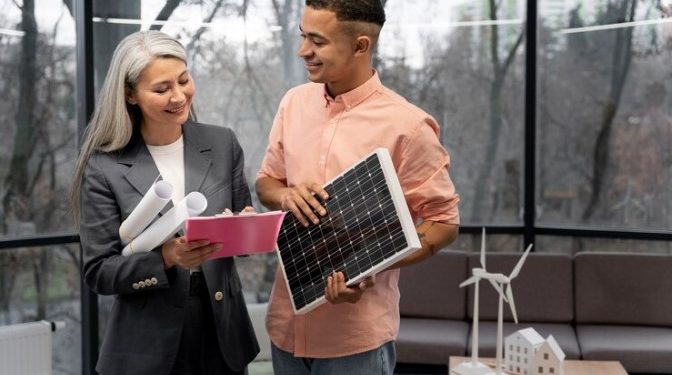As the world becomes increasingly aware of the environmental impacts associated with traditional energy sources, the shift towards renewable energy is gaining momentum. Renewable energy sources not only help reduce carbon emissions but also offer sustainable alternatives to ensure the planet’s health for future generations. Here’s a closer look at the top renewable energy sources that are shaping the future of energy.
1. Solar Power
Solar energy is one of the most accessible and widely used renewable resources. It harnesses the sun’s energy using solar panels, which convert sunlight into electricity. The technology has advanced significantly, making solar panels more efficient and less expensive. Residential solar installations and large-scale solar farms are becoming common sights worldwide, providing clean, sustainable energy that reduces dependence on fossil fuels.
2. Wind Energy
Wind energy is another powerful and effective renewable resource. Wind turbines convert the kinetic energy from wind into electricity without emitting harmful pollutants. This energy source is particularly well-suited to coastal areas and open plains, where winds are stronger and more consistent. The scalability of wind farms, from small installations to massive offshore wind farms, makes them a versatile option for many regions.
3. Hydroelectric Power
Hydroelectric power, generated by harnessing the energy of moving water, is the most established renewable energy source. While it requires significant infrastructure, such as dams, to produce electricity, its efficiency and ability to supply a large percentage of the power needs in regions like North America and Scandinavia make it a cornerstone of renewable energy strategies.
4. Biomass Energy
Biomass energy involves using organic materials, such as plant waste and wood chips, to generate heat or electricity. It is a renewable source because the carbon dioxide emitted during the burning process is generally offset by the CO2 absorbed by the plants during their growth. This cyclical process makes biomass a sustainable option that also helps reduce waste in landfills.
5. Geothermal Energy
Geothermal energy exploits the heat stored beneath the Earth’s surface. By tapping into underground reservoirs of steam and hot water, geothermal plants can generate electricity and provide heating solutions. This source is incredibly reliable and can produce power 24/7, unlike solar and wind resources, which are dependent on weather conditions.
6. Tidal and Wave Energy
The movement of water in the world’s oceans offers potential energy that can be converted into electricity. Tidal energy uses the natural rise and fall of ocean tides to generate power, while wave energy captures the energy of surface waves. These technologies are still in the developmental stages but hold promise for coastal regions with strong tidal movements.
7. Hydrogen Fuel
Hydrogen fuel is a clean energy carrier that can be used in fuel cells to produce electricity, or directly in engines to power vehicles. Although hydrogen is abundant, it is usually found as part of other molecules, like water, and must be separated out—a process that currently relies on various energy sources, including renewables.
Conclusion
The diversity of efficient renewable energy sources available today provides us with multiple options to tackle the environmental challenges posed by conventional energy systems. By investing in and improving these technologies, we can significantly reduce our carbon footprint and pave the way for a sustainable, energy-secure future. The shift to renewables is not just about adopting new energy sources; it’s about transforming our societal and economic systems to create a more sustainable world for everyone.















